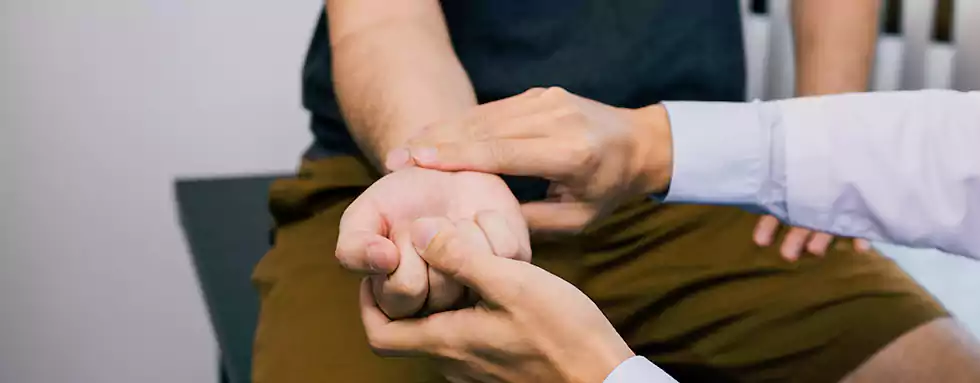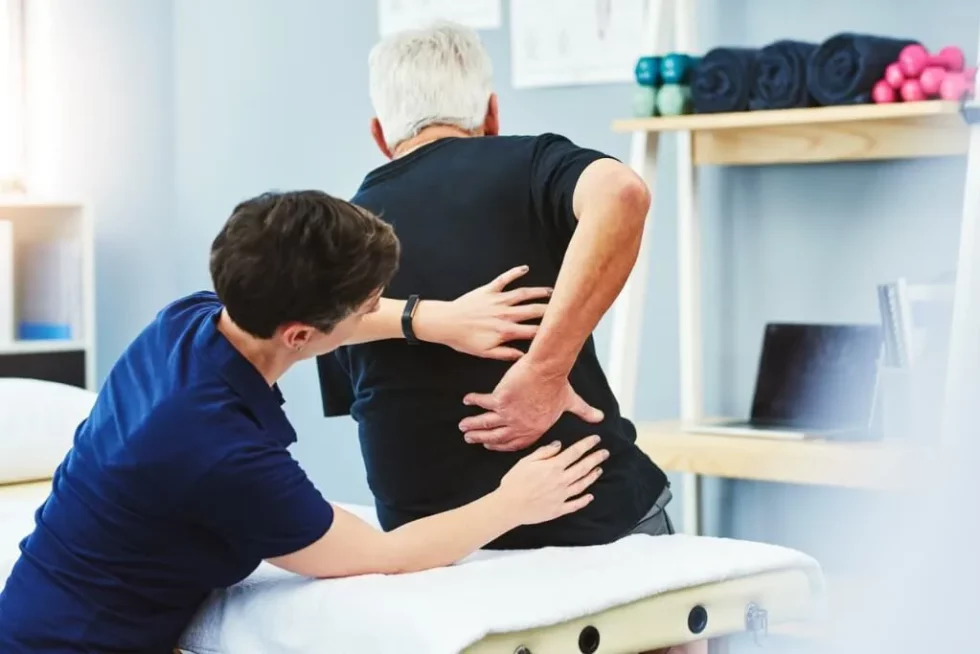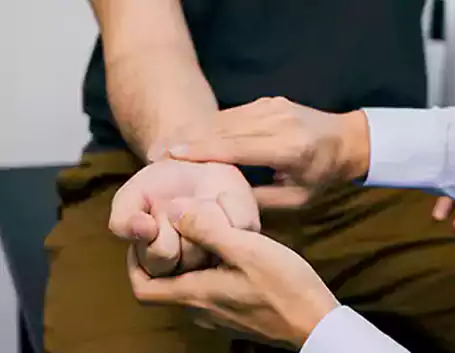Joint Mobilization in Atoka

Restore Comfort Through Joint Mobilization in Atoka
If painful joint stiffness, restricted flexibility or alignment issues across body regions has limited your mobility, our joint mobilization services can effectively treat mechanical dysfunction for lasting relief. This manual physical therapy technique applies targeted forces to sensitize joint neurology using skilled, gentle movements. Allow our specialists to help you move freely and confidently again.
Our Approach to Joint Mobilization in Atoka
We approach joint stiffness, injury and general wear and tear holistically by addressing root mechanical causes of nociception and dysfunction rather than covering painful symptoms temporarily. Combined with tailored strengthening plans, joint mobilization techniques pave a progressive path towards confident mobility by focusing on long-term restoration of ideal joint sliding capacity and biomechanics through patient-centered manual therapy instead of passive quick fixes. Your most fulfilling physical life awaits through consistent committing – and our specialist’s only role is to serve as an invested, compassionate guide along the way, moving at your pace.
Who Can Benefit from Custom Joint Mobilization Techniques?
Joint mobilization provides both acute and cumulative benefits effectively across:
- Osteoarthritis management
- Sports injuries like sprains and dislocated joints
- Tendonitis or frozen shoulder issues
- Neck, mid back or low back discomfort
- Poor posture and chronic pain
- Lifting injuries and repetitive strains
- Limited spinal extension/rotation/flexion
- General exercise performance enhancement
Essentially anyone experiencing painful movement impairments or restrictions in normal range of motion around joints and connective tissues from past injury, postural dysfunction, or wear and tear can find lasting relief through manual mobilization treatment protocols.
Your Compassionate Joint Specialists
Our passionate clinicians invest in robust continuing joint mobilization education to progress patient comfort and mobility using the latest techniques. With advanced certifications and thousands of hours skillfully delivering tailored manual therapy, your experienced physical therapist integrates empathy into care by truly listening to lifestyle contexts framing your impairments.
This patient-centered approach combining clinical expertise with validated therapy tools like mechanical force physics, augmented biofeedback, and targeted exercises means improved movement and recovery is safely realized on your own terms.
Custom Joint Mobilization in Atoka
During assessments, we evaluate and compare joint play, end feel quality, mobility and coordination between regions identifying:
- Hypomobile or hypermobile segments
- Painful tissue barrier limitations
- Poor synchrony through transitional phases
- Need for stability or mobility emphasis
This objective data combined with subjective feedback allows customized manual therapy plans leveraging:
- Grade I-IV joint gliding/trac
- Manual cervical traction
- Functional movement pattern integration
- Corrective home programs for independence
We make adjustments as improved positional awareness, mobility freedom, stability and strength are achieved.
Optimize Joint Dynamics With Targeted Mobilization
During hands-on assessments, your clinician analyzes joint play quality and mobility restrictions identifying hypomobile segments not sequencing properly through range of motion. We also pinpoint painful limitations blocking progress through certain vectors.
This objective data combined with subjective lifestyle context allows customized manual therapy plans leveraging various grades of joint mobilization techniques:
Grade I Joint Oscillations: Applying gentle rhythmic traction pressures stimulates fluid diffusion for nutrition while calibrating neural tension thresholds to expand over successive sessions.
Grade II Joint Gliding: Progressively directing target joints through manually resisted motions reeducates positional proprioception and reinforces capability in newly restored range of motion planes.
Grade III-IV Joint Manipulations: Brief, concentrated forces targeting limitations at joint barrier edges encourage fluid movement and mobility gains when other grades plateau.
Complementary Spinal Traction: Decompressing segments with axial distraction or lateral glides alleviates nerve root tension, enhances mobility and frees movement potential.
Precision Muscle Energy: Isometric muscular resistance allows precise joint realignment control, dynamic flexibility progressions and improved neuromotor control education throughout ranges.
Post-Mobilization Exercises: Fine tuning motor patterns after joint capsules slide open cements gains for cumulative tissue capacity and coordination enhancement transferable to global movement.
FAQs
What is the difference between joint mobilization and stretching?
While both aim to improve mobility, joint mobilization uses targeted manual forces to expand ranges of motion and slide joint surfaces while stretching relies more on sustained muscular lengths and tension through active or passive positioning. Mobilization also directly impacts joint neurology and proprioception.
What is an example of joint mobilization?
Manual therapy techniques like gently oscillating the elbow after injury to improve flexion/extension capacity, applying rhythmic cervical traction to reduce neurological symptoms from poor positioning, and manipulating the shoulder joint following immobilization to optimize mobility.
How do you perform joint mobilization?
Clinicians use specialized skills analyzing movement restrictions across planes then apply manual forces and movements customized to each patient based on impairments. With advanced palpation, we determine appropriate directional pressures and velocities meeting the restrictive barriers then progress joint play delicately over successive sessions to broaden ranges of motion.
Is joint mobility the same as flexibility?
While related, flexibility refers moreso to muscular extensibility surrounding joints controlled actively through internal tension while mobility references the quality of passive joint articulation and neuromotor control achieved through external movement of boney segments. Balancing joint mobility and stability optimizes function.
About The Author
Ken McMahon ignites movement in patients facing pain in there joints. Specializing in physical therapy, their years of dedication unlocks physical potential for a better quality of life. At McMahon Physical Therapy in Atoka, Ken McMahon wields a patient-centered approach, wielding cutting-edge techniques and bespoke care plans to conquer a vast array of physical challenges.
Improve Joint Mobilization in Atoka Today
If painful, irritable joints continue negatively impacting activities you enjoy, noninvasive joint mobilization techniques could provide targeted relief. Contact us today in Atoka to schedule an assessment on leveraging manual therapy to get you moving with comfort and ease again!
What Causes Back Pain & Nerve Issues?
The intricate spinal anatomy contains layers of delicate structures vulnerable to strain that manifest in painful ways when irritated including:
Herniated/Bulging Discs
- Description: Gel leaking through protective rings presses on nerves, causing irritation and pain.
- Impact: This can lead to radiating pain, numbness, or weakness in the affected area.
- Treatment: Options include rest, physical therapy, medication, or in severe cases, surgery.
Sciatic Nerve Compression
- Description: Tension on the lengthy nerve from the lower spine down the leg, often resulting in sharp pain or tingling sensations.
- Impact: Can cause pain, numbness, or weakness in the lower back, buttocks, and legs.
- Treatment: Physical therapy, stretching exercises, medication, or in severe cases, surgery.
Facet Joint Dysfunction
- Description: Degenerative stiffness/inflammation in joints linking vertebrae, leading to restricted movement and pain.
- Impact: This can result in localized back pain, stiffness, and difficulty bending or twisting.
- Treatment: Options include, physical therapy, steroid injections, or in severe cases, surgical intervention.
Muscular Trigger Points
- Description: Overexertion forms hardened spasmed muscle bands, causing localized pain and stiffness.
- Impact: This can lead to muscle tension, restricted movement, and referred pain in surrounding areas.
- Treatment: Techniques such as massage therapy, trigger point injections, stretching exercises, and relaxation techniques can help alleviate symptoms and prevent recurrence.
Of course most patients present with multidimensional symptoms from various interrelated sources. Our holistic perspective identifies all contributing elements during evaluations so they can be addressed through customized care for lasting relief.
Comprehensive Evaluations
Clarifying the precise generators of symptoms is crucial for effective treatment. Our thorough assessment process aims to accurately classify the primary drivers of your discomfort so we can match appropriate therapeutic interventions for lasting relief.
We will perform a series of orthopedic examinations evaluating factors like range of motion limitations, nerve tension signs, localized pain to palpation, and other system testing. Postural assessments analyze usual standing and sitting positions that may be contributing to misaligned spinal structures and muscular strains. Gait evaluations check for limping or asymmetric stance shifts indicating possible muscular imbalances or side dominance related to the painful area. We also review any relevant advanced imaging detailing spinal joint integrity or disc morphology available.
These quantifiable examination findings allow our team to pinpoint the underlying structures involved and the degree to which they are disrupting balance and mobility. This clarity guides the customization of targeted treatment plans.

Restoring Comfort Through Personalized Treatment
We design customized treatment plans that judiciously leverage various disciplined approaches based on your specific pain drivers and lifestyle factors to alleviate discomfort while also shortening recovery timeframes.
Interventions may include:
- Physical Therapy – Modalities like electrical stimulation relax muscles while targeted exercises strengthen and stretch
- Massage Therapy – Smoothes muscular trigger points and loosens connective tissue adhesion
- Lifestyle Guidance – Coaches healthier patterns related to diet, ergonomics, stress reduction, and activity pacing
With consistent application of the right interventions matched to your unique back pain/sciatica diagnosis, rapid increases in daily function and stamina typically occur. Our supportive team helps guide progression each step of the way towards resumed activity levels.
FAQs: Back Pain & Sciatica in Atoka Answered
What is the fastest way to cure sciatica?
While complete sciatica relief may take weeks depending on severity, chiropractic decompression significantly eases pressure and inflammation on the sciatic nerve typically in just a few visits using gentle positioning assisted by muscle relaxation. Pain decreases quickly.
How do I know if my back pain is actually sciatic nerve pain?
Sciatica shooting pains often feel ‘electric’ down the leg in a path-like pattern including into the foot and toes rather than just sore, stiff muscle discomfort. Specific assessment tests like straight leg raise that recreate these unique symptoms confirm sciatic nerve involvement.
What makes the pain/tingling from sciatica worse?
Actions like extended sitting on hard surfaces, forceful spinal twisting or wearing bulky wallets compressing nerves rapidly intensify sciatica symptoms. Maintaining good spinal flexibility through frequent movement, targeted stretches and posture awareness helps keep symptoms quiescent.
How can I relieve irritation of my sciatic nerve at home?
Top at-home sciatica remedies include applying cold packs to effectively numb acute sore areas, performing nerve mobility exercises like knee pulls into the chest, using ergonomic lumbar cushions, and frequently shifting positions between sitting, standing, and walking to prevent compressed nerve aggravation.
Life-Changing Back Pain Relief in Atoka Is Possible
While back and nerve conditions grow progressively worse without strategic intervention, patients at McMahon Physical Therapy report rapid positive shifts in function, stamina, and pain levels through our personalized, multi-specialty treatment plans designed to resolve the very root sources of spinal and sciatic discomfort at their origin for lasting results. We consider it a privilege to help patients live pain-free and actively again following debilitating back and leg pain challenges. Don’t wait another day before taking the first step toward relief by scheduling an evaluation with one of our caring specialists right away. Let’s eliminate your pain at its cause.
About The Author
Imagine overcoming limitations and regaining your physical strength. Ken McMahon, a licensed Physical Therapist in physical therapy, has helped countless individuals like you do just that. Practicing at McMahon Physical Therapy in Atoka, Ken McMahon believes in tailored care and utilizes innovative techniques to create unique solutions for each patient’s journey.
Start Healing from Back Pain and Sciatica in Atoka Today!
Don’t allow back pain or sciatica to dictate your quality of life and mobility any longer. Take control of your health by scheduling a thorough assessment with McMahon Physical Therapy today to uncover what structural imbalance or muscular strain pattern is provoking your symptoms so we can customize optimal treatment. Call our team to get started today!



